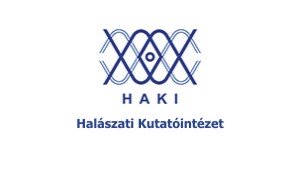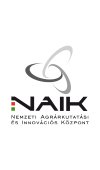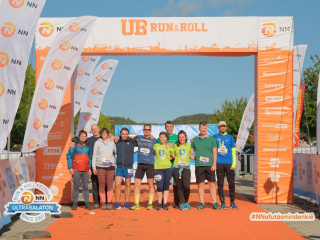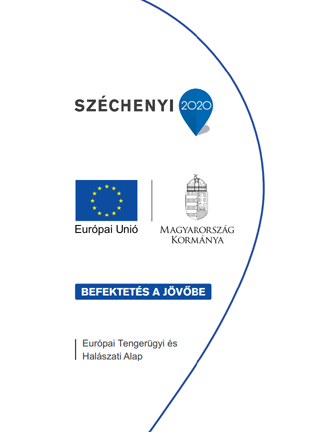Potential of Using processed Animal Protein (PAP) Ingredients to Replace Fish meal in Practical Diet for European Catfish (Silurus glanis)
Shivendra Kumar, J. Sándor Zsuzsanna, Gyöngyvér Fazekas, Zoltán Nagy, Máté Havasi, Dénes Gál
National Agricultural Research and Innovation Centre, Research Institute for Fisheries and Aquaculture, Szarvas, Hungary
Introduction
Quality of dietary protein ingredients plays an important role in regulating growth, feed utilization and nitrogen waste outputs of the fish commercially farmed. Fish meal is the most important and widely used protein ingredient in aquaculture, especially for the production of piscivorous fish species. However, increasing demand, uncertain availability and high price with the expansion of aquaculture made it necessary to search alternate protein sources. Therefore, alternative protein sources of fish meal are quite needed if the aquaculture industry wants to seek a sustainable development in future.
Plant proteins currently represent the only economic and sustainable protein alternative to fishmeal and are increasingly being used in commercial fish feed, with the most common being soyabean meal (SM), which has a high protein content and contains the majority of essential amino acids required by fish. However, soybeans compete with human food, and hence, there is also need to identify other protein-rich resources that could be used in aquatic diets. Processed animal protein (PAP), by-product of terrestrial animals may also be a suitable alternative for replacement of fishmeal as a protein source (Bureau et al., 2000; Webster et al., 2000; Milliamena, 2002; Wang et al., 2006).
European catfish (Silurus glanis) is a candidate for fish culture in Europe because of fast growth, hardiness to environment and high market value. Research on high nutritive, low polluting, and cost effective diet formulation is essential to improve economical and environmental sustainability of European catfish farming.
Therefore, present experiment was designed to study the potential of using processed animal protein (PAP) ingredients to replace fish meal in practical diets for European Catfish (Silurus glanis).
Results and discussion
The results showed that the growth was affected by dietary PAP level (P<0.05). Fish fed the diet with 100% protein either from PAP or soybean meal had lower weight gain percentage, specific growth rate (SGR) and protein efficiency ratio (PER) than the other groups (P<0.05). Feed conversion ratio (FCR) was higher than other groups (P<0.05) with a 100% substitution level. The limitation of use of alternative protein sources may depend on three factors: (i) lower feeding rate with replacement of fish meal by alternate protein (Willams and Barlow, 1996; Robaina et al., 1997); (ii) lower digestibility with incorporation of alternate protein (Bureau, et al., 1999); (iii) imbalance essential amino acids in alternative proteins (Ai and Xie, 2005). Body composition of fish were also significantly different (P<0.05) within groups due to inclusion of different levels of PAP as well as SM. Plasma cortisol level was directly related to replacement level of fish meal. Increasing trend of cortisol with decrease in fish meal level in feed is supported by the heat shock protein (HSP) gene expression in the liver of Silurus glanis. Insulin-like growth factor-1 (IGF-1) and growth hormone receptor (GHR) gene expression in the liver was directly proportional to weight gain of fish. Highest IGF-1 and GHR gene expression in liver was observed in FM group, which is statistically not different (p > 0.05) to SM-30, SM-60, PAP-30 and PAP-60 group and higher (p < 0.05) than other groups (SM-100 & PAP-100), whereas GH gene expression exhibited opposite trend. Perez-Sanchez and Le Bail (1999) first proposed that the GH–IGF-1 network could be used as a marker of growth performance and nutritional status in cultured fish. Present study demonstrates a concurrent down-regulation of GH expression when comparisons were made among the different groups while an opposite trend was noted for IGF-1 and GHR gene expression level (Kumar et al., 2013).
Conclusion
Results of the present study indicated that protein from PAP could substitute upto 60% for fish meal protein without influencing the growth of European catfish, Silurus glanis. The higher substitution levels of PAP induced negative influences on growth and feed utilization of Silurus glanis.
Acknowledgment
The financial support of this project (Harcsatech GOP-1.1.1-11-2011-0028) by Ministry of Agriculture, Hungary is gratefully acknowledged. This experiment was also partially supported by the AQUAREDPOT project funded by the European Commission (FP7-316266).
References
Ai, Q. and Xie, X. 2005. Effects of dietary soybean protein levels on energy budget of the southern catfish, Silurus meridionalis. Comparative Biochemistry and Physiology, 141:461-469.
Bureau, D.P., Harris, A.M. and Cho, C.Y., 1999. Apparent digestibility of rendered animal protein ingredients for rainbow trout. Aquaculture,180: 345–358
Bureau, D.P., Harris, A.M., Bevan, D.J., Simmons, L.A., Azevedo, P.A. and Cho, C.Y. 2000. Feather meals and meat and bone meals from different origins as protein sources in rainbow trout (Oncorhynchusmykiss) diets. Aquaculture, 181:281-291.
Kumar, V., Khalil1, W.K.B., Weiler, U., Becker, K. 2013. Influences of incorporating detoxified Jatropha curcas kernel meal in common carp (Cyprinus carpio L.) diet on the expression of growth hormone- and insulin-like growth factor-1-encoding genes. Journal of Animal Physiology and Animal Nutrition, 97, 97-108.
Millamena, O.M. 2002. Replacement of fish meal by animal by-product meals in a practical diet for grow-out culture of grouper Epinephelus coioides. Aquaculture, 204:75-84.
Pérez-Sánchez, J., Le Bail, P.Y. 1999. Growth hormone axis as marker of nutritional status and growth performance in fish. Aquaculture, 177, 117–128.
Robaina, L., Moyano, F.J., Izquierdo, M.S., Socorro, J., Vergara, J.M. and Montero, D., 1997. Corn gluten and meat and bone meals as protein sources in diets for gilthead seabream (Sparus aurata): nutrition and histological implications. Aquaculture, 157: 347–359.
Wang, X. and Parson, C.M. 1998. Effect of raw material source, processing systems, and processing temperatures on amino acid digestibility of meat and bone meals. Poultry Science, 77: 834 – 841.
Webster, C.D., Thompson, K.R., Morgan, A.M., Grisby, E.J. and Gannam, A.L. 2000. Use of hempseed meal, poultry by-product meal, and canola meal in practical diets without fish meal for sunshine bass (Morone chrysops×M. saxatilis). Aquaculture, 188:299–309.
Willams, K.C. and Barlow, C.G. 1996. Nutritional research in Australia to improve pelleted diets for grow-out barramundi. In: Kongkeo, H., Cabanban, A.S. (Eds.), Aquaculture of Coral Fishes and Sustainable Reef Fisheries. NACA and Pacific,Bangkok, Thailand
Acknowledgements: The present study was partially supported by the AQUAREDPOT EU FP7 project (No: 316266), regarding the processing from the statistical point of view of the raw data obtained during this research.
Programajánló
Hírek
Tisztelt Látogatók!
A hazai agrár-felsőoktatás szükséges megújulásának mérföldköve az alapítványi fenntartású Magyar Agrár- és Élettudományi Egyetem (MATE) létrejötte, amely 2021. február 1-től 5 campuson, több mint 13 ezer hallgató számára fogja össze a dunántúli és közép-magyarországi élettudományi és kapcsolódó képzéseket. Az intézményhez csatlakozik a Nemzeti Agrárkutatási és Innovációs Központ (NAIK) 11 kutatóintézete is, így az új intézmény nem csupán egy oktatási intézmény lesz, hanem az ágazat szellemi, szakpolitikai és innovációs központjává válik, amely nagyobb mozgásteret biztosít a képzések, a gazdálkodás és szervezet modernizálásához, fejlesztéséhez. Az összeolvadással magasabb fokozatra kapcsolunk, a kutatói és egyetemi szféra szorosabban fonódik majd össze, aminek következtében még több érdekes, izgalmas kutatás-fejlesztés születhet majd az agrárium területén.
Kérjük, kövesse tevékenységünket a jövőben is a www.uni-mate.hu honlapon!
A szokásostól eltérően az idei évben ősszel, október 03-04 között került megrendezésre az Ultrabalaton csapatversenye. NAIK-os csapat az idei évben állt először rajthoz a 14. alkalommal kiírt versenyen.



